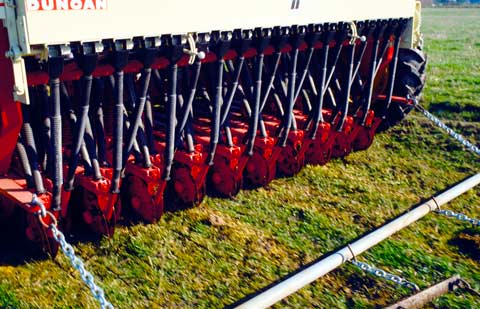
Direct drilling, where the seed is drilled into unploughed soil, has become more widespread since the late 1980s. It maintains soil moisture, improves the soil structure and results in less soil loss from wind. It is common for the existing crop or pasture to be sprayed twice before being left fallow for about six weeks while the old vegetation breaks down. This direct drill follows the same layout as a standard seed drill. However, instead of a normal coulter (blade) for drilling the seed in the ground, it has a pair of discs in a V-shape that cut the surface of the soil and open up a small furrow.
Using this item
Natural Sciences Image Library of New Zealand
Reference:
Ag0240LU.tif
This item has been provided for private study purposes (such as school projects, family and local history research) and any published reproduction (print or electronic) may infringe copyright law. It is the responsibility of the user of any material to obtain clearance from the copyright holder.






Add new comment